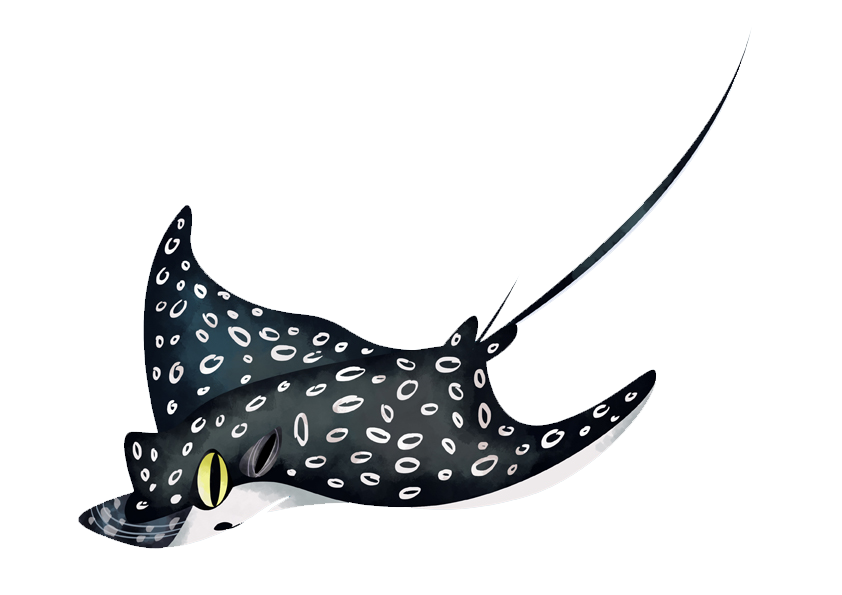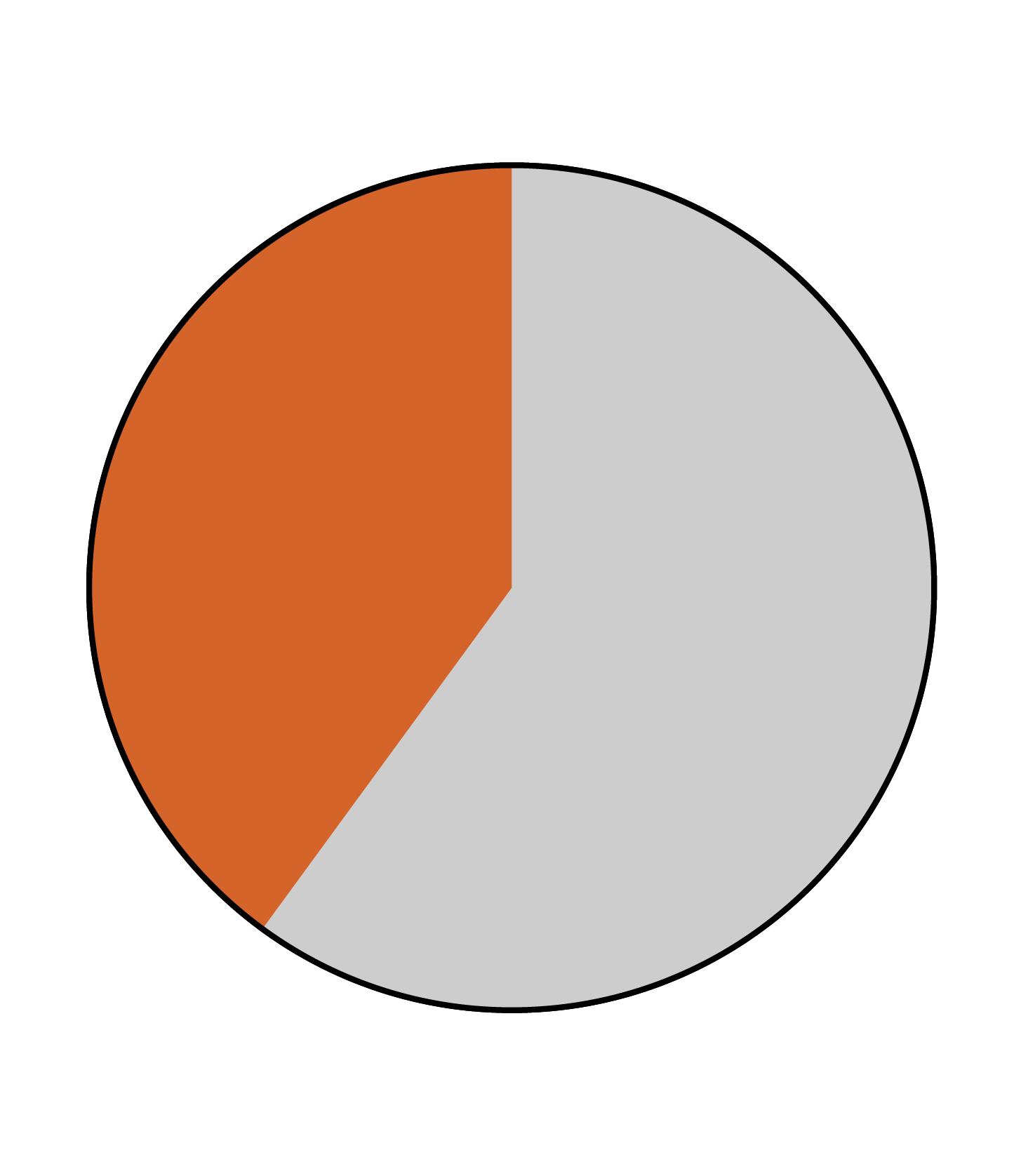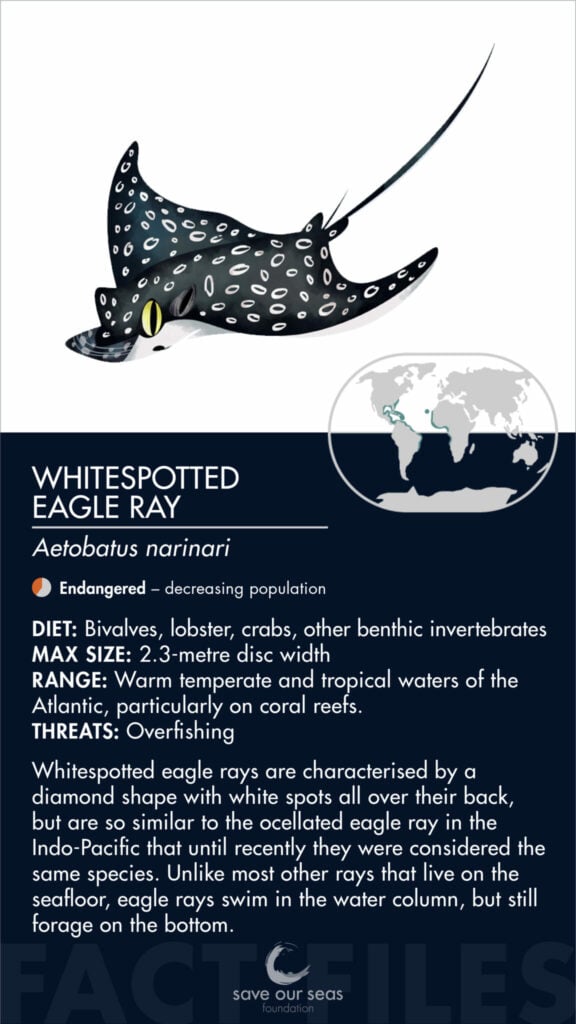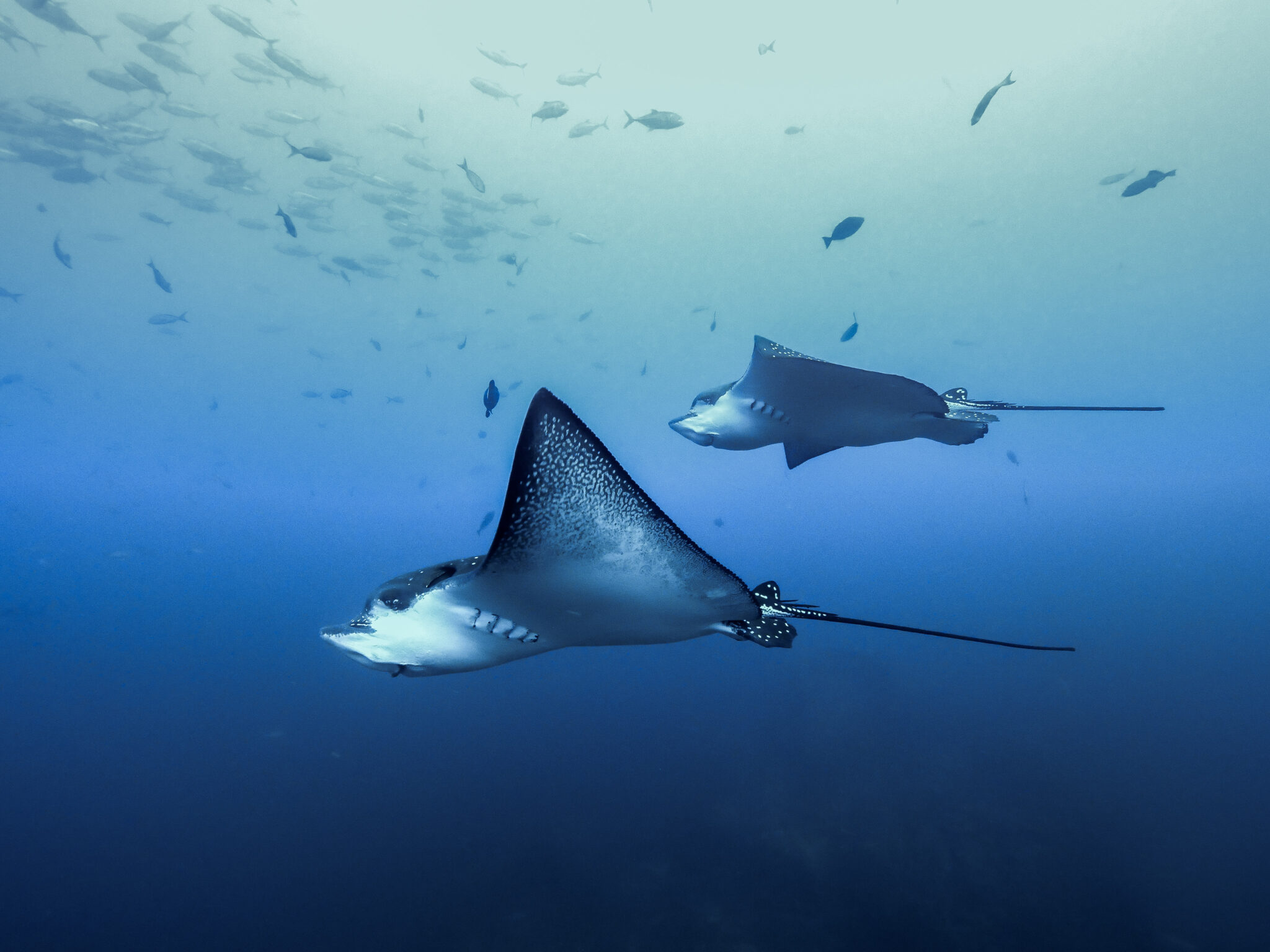Spotted eagle ray
Aetobatus narinari



Whitespotted eagle rays are found in most tropical and warm temperate waters of the Atlantic. They are characterised by a diamond shape with white spots all over their back, but are so similar to the ocellated eagle ray in the Indo-Pacific that until recently were considered the same species. Unlike most other rays that live on the seafloor, eagle rays swim in the water column, but still forage on the bottom.

Identification
Whitespotted eagle rays can be clearly identified by their shape and colouration. They have broad pectoral fins with pointed tips, giving the body a diamond shape, and the back is covered in white spots. The snout is also large and V-shaped, resembling a beak – hence the name ‘eagle’ ray. The tail is long and whip-like, with only short spines. Unless they are foraging on the seafloor, they are usually seen swimming in the water column. Whitespotted eagle rays look very similar to ocellated eagle rays and until recently were considered the same species, but the whitespotted only occurs in the Atlantic, whereas the ocellated is found in the Indo-Pacific.
Reproduction
Whitespotted eagle rays are ovoviviparous meaning the eggs develop inside the body and hatch within the mother. After being released from the egg, the embryos are nourished by a yolk sac as opposed to a placenta. Despite the lack of placenta, they do receive nourishment from uterine secretions as well as the yolk sac. Approximately 1 to 5 pups are born in each litter, each measuring 18–36 cm in disc width. Pups are produced annually after a 12-month gestation. Although their lifespan is unknown, the generation length of whitespotted eagle rays – from birth to reproduction – is estimated at 10 years.
Habitat and geographical range
Whitespotted eagle rays occur in the Atlantic Ocean. In the Western Central and southwest Atlantic, it ranges from North Carolina, USA to Rio de Janeiro, Brazil, including the Gulf of Mexico, the Bahamas, and the Caribbean Islands. In the Eastern Central and southeast Atlantic this species is thought to range from Mauritania south to Angola, and possibly South Africa. This species is often associated with coral reefs, and frequently enters lagoons and estuaries. They swim in the water column over the continental shelf, and have been recorded from the surface to depths of 60 metres.

Diet
The whitespotted eagle ray feeds on a variety of prey, mostly from the seafloor. Using its shovel-like nose, it forages in sand and mud for crustaceans (e.g. shrimp), bivalves (e.g. clam, oyster) and other molluscs (e.g. octopus, squid). It will also eat small bony fish and sea urchins. Once caught, they have grinding plate teeth for crushing prey.
Threats
Whitespotted eagle rays are primarily threatened by overfishing. They live in shallow coastal habitats where fishing is intense all over their range. Swimming throughout the water column also makes them particularly vulnerable to gillnet fisheries, where they are taken most frequently (alongside industrial shrimp trawl fisheries). Given their reliance on coastal habitats, they are also vulnerable to habitat loss through coastal development and pollution. Whitespotted eagle rays are estimated to have experienced a 50–79% population decline, and are subsequently categorised as Endangered on the IUCN Red List.
Relationship with humans
Whitespotted eagle rays are typically consumed locally, either fresh or salted and fried. They are also used for their oil and fishmeal, and are highly valued in Venezuela in traditional cooking recipes. They are popular species for aquariums as they are attractive and cope well in captivity. Whitespotted eagle rays are also an ecotourist draw for divers and snorkellers, who watch them swimming gracefully in large schools.
Fun Facts
Whitespotted eagle rays can jump clear out of the water, perhaps removing parasites or communicating with others.
They have venomous spines on their tails that can be used for self-defence.
They have plate-like teeth that they use to crush and grind the hard shells of their prey, which mainly consists of shellfish such as clam, oyster, sea urchin and shrimp.
Until recently, the whitespotted and ocellated spotted eagle rays were thought to be the same species, but have now been identified as separate species that live in the Atlantic and Indo-Pacific, respectively.
References
Oceana, Spotted eagle ray Florida Museum, Aetobatus narinari IUCN Red List, Spotted eagle ray






